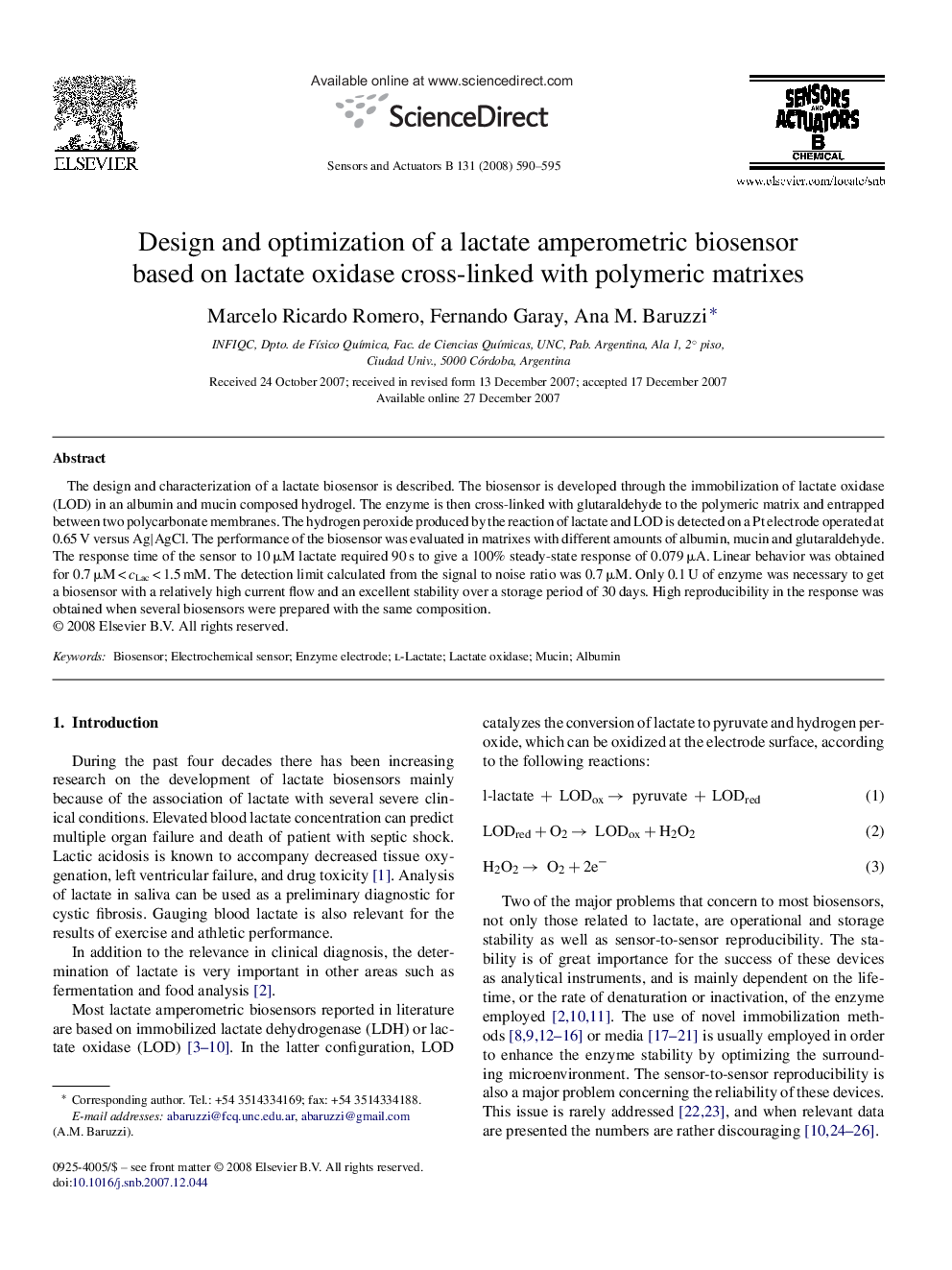| Article ID | Journal | Published Year | Pages | File Type |
|---|---|---|---|---|
| 743912 | Sensors and Actuators B: Chemical | 2008 | 6 Pages |
The design and characterization of a lactate biosensor is described. The biosensor is developed through the immobilization of lactate oxidase (LOD) in an albumin and mucin composed hydrogel. The enzyme is then cross-linked with glutaraldehyde to the polymeric matrix and entrapped between two polycarbonate membranes. The hydrogen peroxide produced by the reaction of lactate and LOD is detected on a Pt electrode operated at 0.65 V versus Ag|AgCl. The performance of the biosensor was evaluated in matrixes with different amounts of albumin, mucin and glutaraldehyde. The response time of the sensor to 10 μM lactate required 90 s to give a 100% steady-state response of 0.079 μA. Linear behavior was obtained for 0.7 μM < cLac < 1.5 mM. The detection limit calculated from the signal to noise ratio was 0.7 μM. Only 0.1 U of enzyme was necessary to get a biosensor with a relatively high current flow and an excellent stability over a storage period of 30 days. High reproducibility in the response was obtained when several biosensors were prepared with the same composition.
